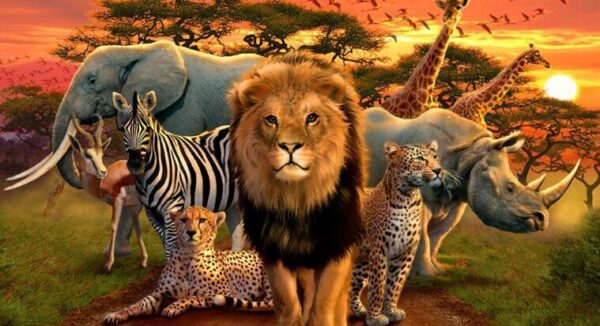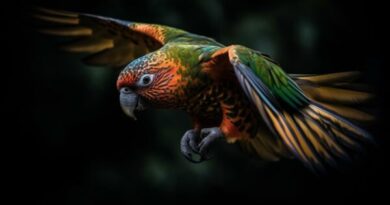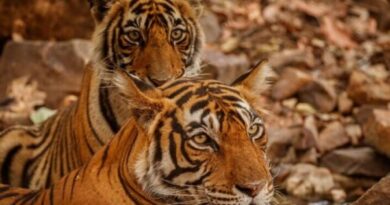Preserving Our Planet: The Urgency of Wildlife Conservation
Wildlife conservation is crucial for protecting endangered species and their habitats, ensuring that future generations can appreciate the rich biodiversity our planet offers. With increasing threats from habitat destruction, climate change, and human activities, the need for action has never been more urgent. This blog explores the importance of wildlife conservation, the challenges we face, and the ways we can contribute to safeguarding our planet’s remarkable wildlife.
The Importance of Wildlife Conservation:
Maintaining Biodiversity: Conservation efforts help preserve biodiversity, essential for ecosystem health and resilience. Each species contributes uniquely to its ecosystem, and losing one can disrupt the entire system.
Ecosystem Services: Wildlife supports crucial ecosystem services like pollination, pest control, and nutrient cycling, which are vital for human well-being and survival.
Cultural Significance: Many cultures have deep-rooted connections with wildlife. Protecting these species ensures the continuation of cultural traditions and heritage.
Scientific Value: Wildlife provides valuable insights into natural processes and evolutionary biology. Preserving diverse species enhances our understanding of the natural world and scientific research.
Major Threats to Wildlife:
Habitat Loss: Deforestation, urban development, and agricultural expansion lead to habitat destruction, directly threatening wildlife populations.
Climate Change: Altered weather patterns, rising temperatures, and extreme weather events disrupt habitats and food sources, making survival difficult for many species.
Illegal Wildlife Trade: Poaching and the illegal trade of wildlife, driven by demand for exotic pets, traditional medicine, and luxury items, pose severe threats to endangered species.
Pollution: Pollution from plastics, chemicals, and other contaminants degrades habitats and harms wildlife health.
Inspiring Success Stories:
Despite numerous challenges, there have been remarkable successes in wildlife conservation:
The Bald Eagle: Once endangered by habitat loss and DDT poisoning, the bald eagle population has significantly recovered thanks to legal protections and conservation efforts.
Mountain Gorillas: Dedicated conservation efforts, including anti-poaching measures and habitat protection, have led to a gradual increase in mountain gorilla numbers.
Sea Turtles: Global initiatives to protect nesting sites and reduce bycatch have helped several sea turtle species rebound.
How You Can Make a Difference:
Support Conservation Organizations: Contribute to or volunteer with organizations focused on wildlife conservation. Every contribution supports essential projects and research.
Reduce Your Carbon Footprint: Adopt sustainable practices like using energy-efficient appliances, reducing waste, and supporting renewable energy to combat climate change.
Educate and Advocate: Raise awareness about wildlife conservation through social media, community events, and educational programs. Support and promote policies that safeguard wildlife and their natural habitats.
Choose Sustainably: Opt for eco-friendly and ethically sourced products. Avoid items made from endangered species or that contribute to habitat destruction.
Engage in Citizen Science: Participate in citizen science projects that monitor wildlife populations and habitats. Your observations offer crucial data to support conservation efforts.
Conclusion:
Wildlife conservation is a shared responsibility that requires global cooperation. By recognizing the importance of protecting wildlife and taking steps to address threats, we can ensure that our planet remains vibrant and diverse. Each small action contributes to a broader movement dedicated to preserving the natural world for future generations. Let’s join forces to protect our planet’s incredible wildlife.
FAQs:
1. What does wildlife conservation entail?
Wildlife conservation encompasses efforts to safeguard endangered species and their habitats, aiming to preserve biodiversity and ensure the survival of wildlife for future generations.
2. Why is wildlife conservation significant?
Wildlife conservation is crucial for maintaining biodiversity, which supports ecosystem health and resilience. It also sustains ecosystem services vital for human well-being, preserves cultural connections with nature, and advances scientific understanding.
3. What are the primary threats facing wildlife today?
Major threats include habitat loss from deforestation and urban expansion, climate change impacts altering habitats and food availability, illegal wildlife trade driven by demand for exotic pets and products, and pollution affecting wildlife health.
4. Can you provide examples of successful wildlife conservation efforts?
Notable successes include the recovery of bald eagle populations through protective measures, increases in mountain gorilla numbers due to habitat conservation and anti-poaching efforts, and global initiatives leading to the conservation of sea turtle populations.
5. How can individuals contribute effectively to wildlife conservation?
Individuals can make a difference by supporting conservation organizations through donations or volunteering, reducing their environmental footprint to mitigate climate change impacts, raising awareness through education and advocacy, making sustainable choices in daily life, and participating in citizen science initiatives to monitor wildlife.
6. What role does preserving habitats play in wildlife conservation?
Preserving habitats is critical as it provides essential environments for wildlife to thrive, maintains biodiversity, supports ecosystem functions like pollination and nutrient cycling, and enhances species resilience against environmental challenges.
7. How does climate change affect wildlife conservation strategies?
Climate change poses challenges by altering habitats and weather patterns, impacting food sources, and increasing the vulnerability of wildlife species. Conservation efforts must adapt to these changes to effectively protect and manage wildlife populations.
8. What are effective methods for raising awareness about wildlife conservation?
Raising awareness involves initiatives such as social media campaigns, educational programs in schools and communities, organizing conservation events and workshops, promoting sustainable tourism that supports conservation efforts, and advocating for policies that protect wildlife habitats.
9. Why should we prioritize the protection of endangered species?
Protecting endangered species is essential for maintaining ecological balance, preserving biodiversity essential for ecosystem stability, advancing scientific research on natural processes, and respecting cultural values and traditions associated with wildlife.
10. How can local communities actively participate in wildlife conservation initiatives?
Local communities can contribute by adopting sustainable practices, supporting local conservation projects, respecting wildlife habitats and corridors, promoting responsible wildlife tourism, and collaborating with conservation experts and organizations to monitor and safeguard wildlife populations.




